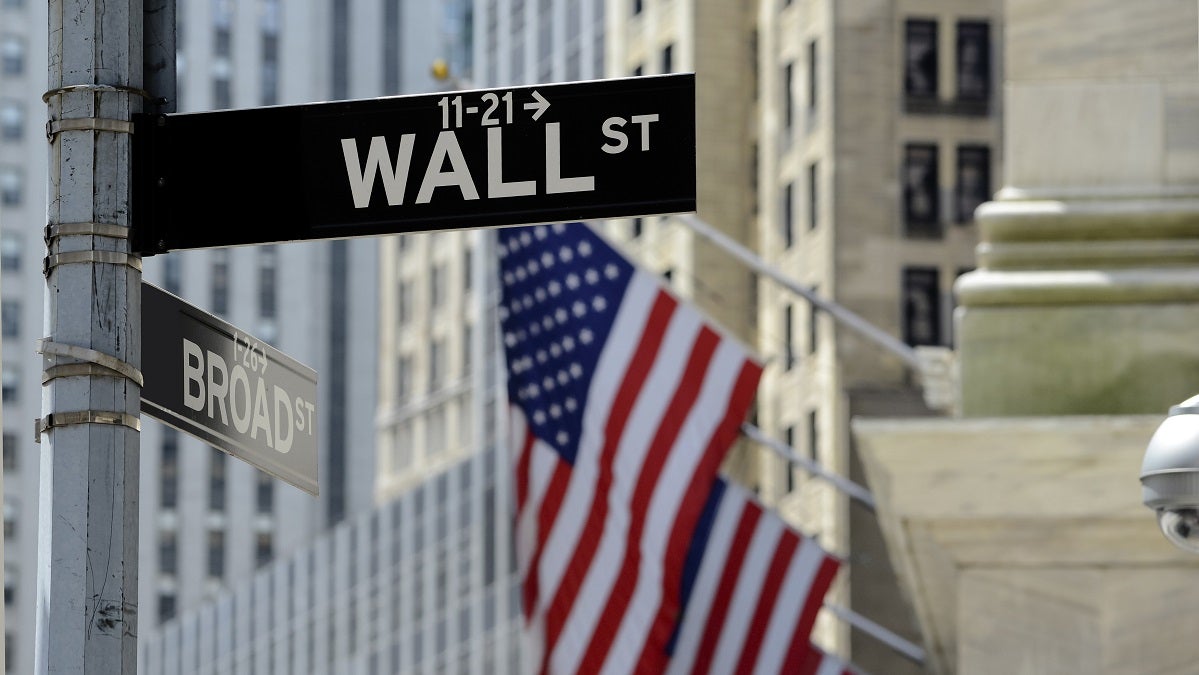
We may think we know what real economic volatility looks like, having witnessed the effects of the Covid-19 pandemic and, back in 2007-08, the global financial crisis. But we’ve seen nothing yet. Imagine a time when several climate risks come to pass in quick succession, resulting in a series of natural disasters around the globe. This could spark a collapse in market sentiment and asset values, with a massive repricing of risk and a spike in borrowing costs.
This would be a so-called Minsky moment, a term coined by US economist Paul McCulley in memory of one of his key academic influences, the late Hyman Minsky, to describe the point at which a number of factors combine to end an unsustainable period of bullish speculation and cause a crash.
Mark Carney, the former governor of the Bank of England – a man not known for overstatement – warned of the possibility of a climate-induced event of this kind in 2015.
Giulia Christianson is director of sustainable private-sector finance at the World Resources Institute, a not-for-profit research organisation. She agrees that “the climate crisis could absolutely induce a financial crisis. The onset of the pandemic gave us a glimpse of how an unforeseen shock can shut down economies, cripple supply chains and cause intense volatility in the financial markets.”
It’s hard to assess risk in markets when very little high-quality information is being shared. Research by the Carbon Disclosure Project (CDP) in 2020 found that the combined carbon footprint of all the firms in the investment portfolio of the average financial institution was 700 times larger than the company’s own footprint. Yet only a quarter of the 332 finance providers in the study said that they routinely reported on the emissions records of their investees, while 49% admitted that they “do not conduct any analysis of how their portfolio impacts the climate at all”.
The CDP’s global director of policy engagement and external affairs is Pietro Bertazzi. He observes that both financial institutions and their investees are “failing to gather an accurate depiction of their impacts and the risks posed by the climate crisis. This leads to a much higher potential of reaching a climate Minsky moment, including a greater likelihood of stranded assets. The current regulation of environmental disclosure is not sufficient.”
Businesses are therefore sleepwalking into a world that will be far warmer than the temperature target set by the United Nations (1.5ºC above pre-industrial levels) in its Paris agreement of 2016. If this risk is not enough to motivate the markets, the prospect of losing billions of pounds in another financial crisis just might be.
The way governments galvanised themselves into action for the Covid crisis has not been replicated for the climate crisis
In September 2021, the Bank of International Settlements issued a warning about the risk of a bubble in the sustainable finance market. Government bonds are also heavily exposed to climate risk.
“Despite being in a multitrillion-dollar market, investors have historically lacked the tools needed to hedge climate risk in sovereign bonds,” says David Harris, global head of sustainable finance at the London Stock Exchange Group.
Given the scale of the problem, there is a growing consensus that the reporting of climate risks should be mandatory, not voluntary, in all jurisdictions. This would arm investors with more data, says Cindy Rose, head of responsible capitalism at Majedie Asset Management.
But she adds that “investors need to know how to interpret this properly. It’s not just having the data that’s important; it’s what we do with it that matters. In the end, though, I hope that the market will be able to make better investment decisions.”
At this point there is no large body of evidence to indicate that climate risks could bring down the whole financial system. Much depends on new commitments by governments to slash emissions through measures such as taxation. The UN’s COP26 climate conference in Glasgow could shed some light on member states’ intentions. This would give markets some of the confidence they require to manage the risk sensibly over time.
The finance sector tends to treat climate change as a chronic condition rather than an acute one, but a rapid succession of natural disasters could spook the markets. Beyond this factor, there are so-called transition risks. These occur when governments enact tougher policies and their economies can’t adjust quickly enough to these. There are signs of this in China and the UK.
“We have rising energy demand, yet a lack of viable alternatives to fossil fuels, as well as slow green policy development by governments. This heady combination not only worsens our longer-term warming scenario; it also points to the possibility of a more severe financial fall-out,” Rose says. “Ideally, governments would work together on this, but the world is so factious that it makes collaboration difficult. There may be some elements of a Minsky moment that are unavoidable, simply because people refuse to take responsibility or work collectively.”
It shouldn’t be this way. The release of tonnes of atmosphere-warming methane from intensive beef farming in one country, for instance, could affect the climate of another thousands of miles away. All markets, businesses and people are connected when it comes to climate change. The problem therefore requires countries to work in concert to find a solution.
“The way governments galvanised themselves into action for the Covid crisis has not been replicated in the case of the climate crisis.” reports Mona Shah, head of sustainable investments at Stonehage Fleming. “Action on the climate crisis is lacking because it has not been coordinated globally. Governments need to galvanise themselves into pursuing a set of systematic actions, rather than simply setting their countries empty targets for future carbon neutrality.”
She continues: “Governments also need to conduct deep research to understand the vulnerability to GDP growth at each half-degree of global warming and at a sector-by-sector level. This understanding can then be used to drive actions for every industry concerning carbon reduction and offsetting. It seems to me that we are all suffering from politicians’ cognitive dissonance, even though the environment is increasingly becoming a vote-winning issue.”
When there is a poor picture of how the climate evolves and affects the world’s man-made assets over time, there could also be problems. Modelling this level of complexity is a real challenge, according to Stephanie Maier, global head of sustainable and impact investment at GAM Investments.
“We’re dealing with a lot of uncertainty – uncertainty about climate policy; uncertainty about the role of existing and future innovation; and uncertainty about companies’ commitment and ability to transition,” she says. “Are we going to avoid a climate Minsky moment? It is too early to know.”
So, what is being done to avert this moment? There are some positive trends. The gradual pricing of carbon risk into global markets is occurring and will at least continue over the medium term. Climate reporting is coming on in leaps and bounds – it’s becoming increasingly reliable, providing more information about emissions throughout a company’s global supply chain, as well as on the firm’s direct emissions and energy consumption. Businesses are also adopting science-based targets apace.
All this is enabling more ESG-related data to percolate up into boardrooms, where it can be used for strategic decision-making purposes. This is where it will make a real difference. The key to an orderly transition for financial institutions is engagement with the companies they finance and vice versa, in conversations where everyone is empowered by information.
“The transparent sharing of environmental impact data is critical to tackling the climate crisis,” Bertazzi says. “We’re now seeing a significant momentum in corporate action. In 2020, for instance, we had record numbers of companies disclosing their environmental data via CDP.”
This groundswell of information, action and reaction concerning greenhouse gas emissions, decarbonisation and energy consumption should help capital providers to fortify markets, price in risk and finance change. Will it be enough to stave off a Minsky moment? Only time will tell.
The case for mandatory environmental reporting across the board
We are still in the early days of developing internationally recognised standards that incorporate climate-related impacts into financial accounts. Yes, reporting standards are on the rise, but so too is the volume of corporate emissions data and climate-related disclosures. But full reporting of climate risk isn’t uniform across the globe yet. And accounting for supply chains worldwide is another issue.
“Carbon accounting has been mandatory in the UK for listed companies since 2013 and is now standard practice in most developed countries, including the US, for quoted firms,” explains Lucian Peppelenbos, climate strategist at Robeco. “It does, though, need to be adopted more widely by all companies outside the stock markets. This may be difficult for smaller unlisted businesses, for which the process remains voluntary.”
To date, disclosures on climate risk have largely been shaped by the market in a trend that could be termed ‘pre-regulation’. It means that there is now a de facto cost of access to capital markets in many regions. Companies have to invest more on the ESG front to access funds.
The EU has legislated in this area with its carbon border adjustment mechanism, a complex system that imposes a levy on specific imports. This will affect mainly high-emission countries, such as India and China, but more needs to be done.
“Regulation on environmental disclosure increases transparency and would help to accelerate the sustainability transformation of capital markets and economies, which is urgently needed to combat the environmental crisis,” says Pietro Bertazzi of the CDP. “There’s also an urgent need for consistent, comparable, complete and confirmable reporting. Yet 2021 marks a turning point for standards. The scene is set for a unified global comprehensive reporting system, led by the International Financial Reporting Standards Foundation. This is a very welcome development. A mandatory disclosure system would create regulatory certainty, which would push those that do not currently disclose voluntarily to do so.”
Whether the UK needs a climate-reporting watchdog to ensure compliance remains to be seen. No one in industry likes the heavy hand of regulation bearing down on them. Politicians are talking about cutting red tape to spur low-carbon innovation, not about creating more. The issue is whether financial markets are doing enough sufficiently quickly.
“It’s not that we need a new set of regulators for different markets. We need existing regulators to mainstream climate change into their mandates and activities,” argues Giulia Christianson of the World Resources Institute. “This requires leadership and political will, as well as new capacity and know-how. But it can and should be done –sooner rather than later.”
It is likely that, as reporting becomes important enough to the markets, investors and the public, more oversight will be put in place to ensure that the rules are respected.

We may think we know what real economic volatility looks like, having witnessed the effects of the Covid-19 pandemic and, back in 2007-08, the global financial crisis. But we’ve seen nothing yet. Imagine a time when several climate risks come to pass in quick succession, resulting in a series of natural disasters around the globe. This could spark a collapse in market sentiment and asset values, with a massive repricing of risk and a spike in borrowing costs.
This would be a so-called Minsky moment, a term coined by US economist Paul McCulley in memory of one of his key academic influences, the late Hyman Minsky, to describe the point at which a number of factors combine to end an unsustainable period of bullish speculation and cause a crash.
Mark Carney, the former governor of the Bank of England – a man not known for overstatement – warned of the possibility of a climate-induced event of this kind in 2015.





